I would like to share this recipe with everyone. It is a recipe that I make about every 2 weeks. It is one of my favorites from a recipe book called BAKING BREAD: Old and New Traditions by Beth Hensperger. The cookbook was given to me about 10 years ago from my highschool girlfriends. I tried a lot of the recipes but they are were very challenging and it wasn't until recently that I really started to understand how they worked (due in large part to this website!). So please try this and if you can find the cookbook, many of you advanced bakers would LOVE the challenge of the recipes.
Seven-Grain Honey Bread
Yield: 2 9X5 loaves
1 1/2 cups of boiling water
1 cup seven-grain cereal
1 1/2 tablespoons active dry yeast
Pinch sugar
1/4 cup warm water (105 to 115 degrees)
1/4 cup warm buttermilk (105 to 115 degrees)
1/3 cup local honey (I usually substitute molasses for honey as I like this bread darker and less sweet)
3 tablespoons vegetable oil
2 tablespoons unsalted butter, melted
3 eggs
1 tablespoon salt
4 1/2 to 5 cups of unbleached all-purpose flour
1. In a small bowl, pour boiling water over the seven-grain cereal. Let stand for 1 hour to soften and come to room temperature.
2. In a small bowl, sprinkle the yeast and pinch of sugar over the warm water. Stir to dissolve and let stand until foamy, about 10 minutes.
3. In a large bowl, using a whisk, combine the buttermilk, honey, oil, butter, eggs, salt, and 1 cup of the flour. Beat hard until smooth, and 1 minute. Add the cereal and yeast mixture. Add the remaining unbleached flour 1/2 cup at a time until a soft, sticky dough is formed that just clears the sides of the bowl, switching to a wooden spoon when necessary. This dough may also be mixed in a heavy-duty mixer, if desired.
4. Turn the dough out onto a lightly floured surface and knead until a soft and springy dough is formed, about 3 minutes, adding 1 tablespoon of flour at a time as necessary to prevent sticking. The dough will have a nubby and slightly tacky feel. Place a greased deep container, turn once to coat the top and cover with plastic wrap. Let rise at room temperature until doubled in bulk about 1 to 1 1/4 hours.
5. Turn the dough out onto the work surface. Divide into 2 equal portions and form into 9X5 loaves. Place the loaves in greased loaf pans. Cover loosely with plastic wrap and let rise at room temperature until double in bulk, about 30 to 40 minutes. Twenty minutes before baking, preheat over to 375.
6. Bake in the center of the preheated oven until golden brown and hollow-sounding when tapped, about 35-50 minutes. Remove from pans to cool on the racks before serving.
Hope you all enjoy and please comment if you try it!
http://www.amazon.com/Baking-Bread-Old-New-Traditions/dp/0811800784




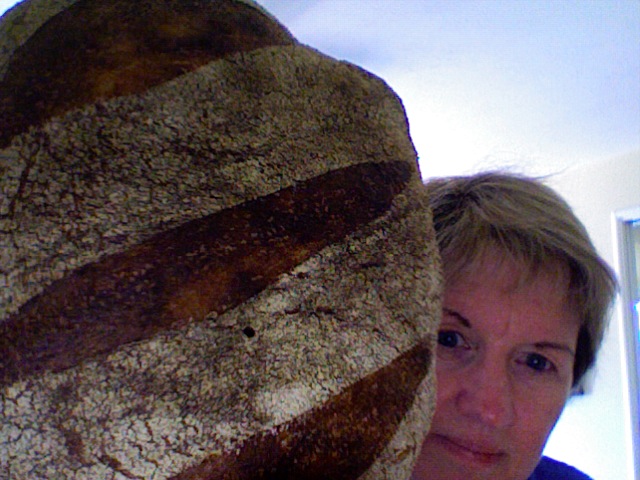
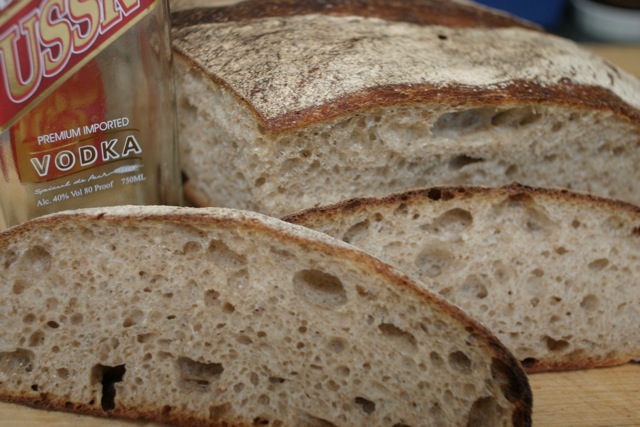
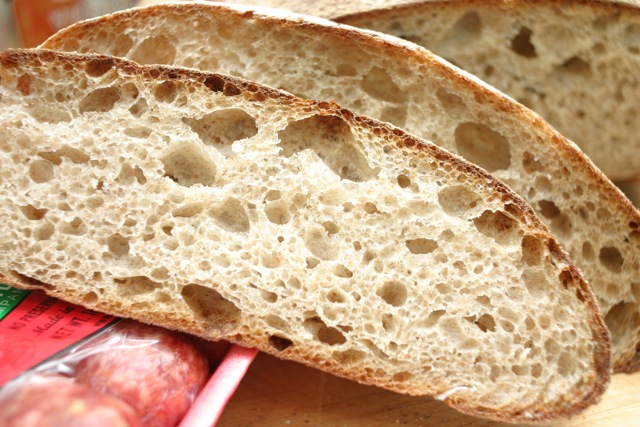
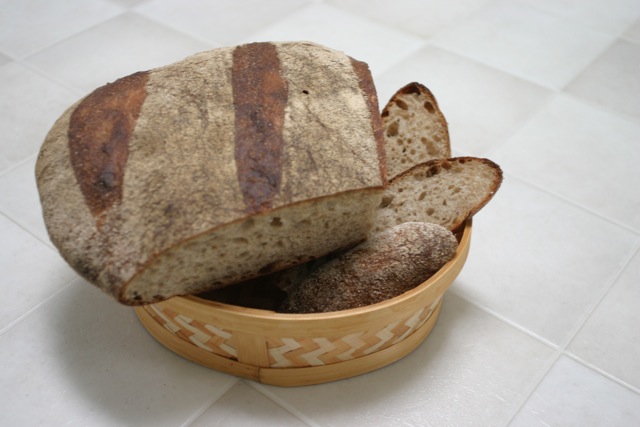
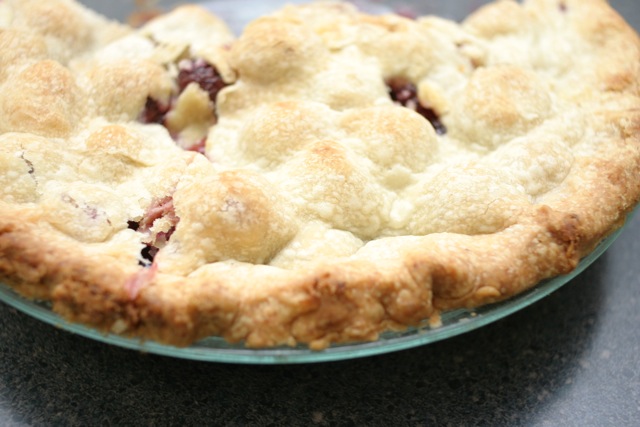
 cracked wheat
cracked wheat 
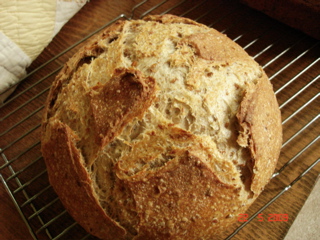
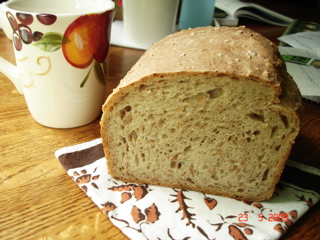
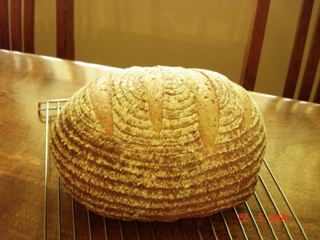 Hamelman's light rye
Hamelman's light rye